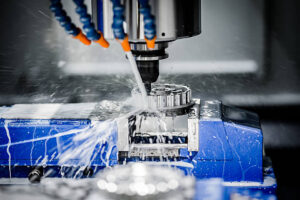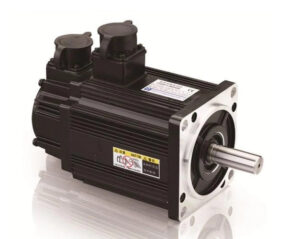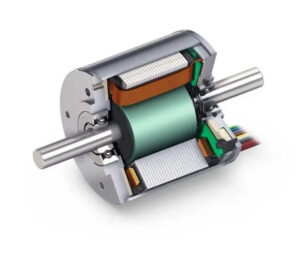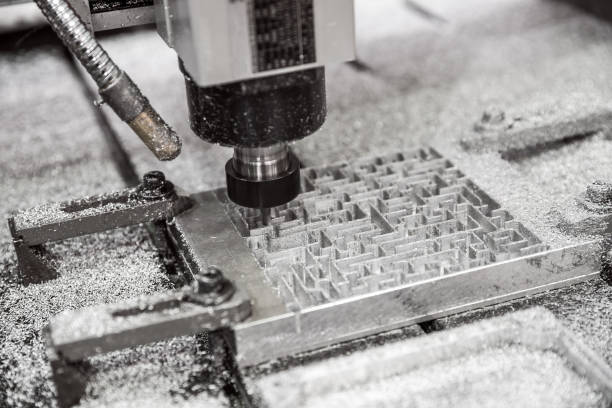Spindle Motors, Stepper Motors, and Brushless DC Motors: Understanding the Key Differences
In the world of industrial automation and precision machinery, motors play a crucial role in powering various applications. Three types of motors that often come up in discussions are spindle motors, stepper motors, and brushless DC motors. While they may seem similar at first glance, each has unique characteristics that make them suitable for different purposes. This article will delve into the differences between these motor types, helping you understand which one might be best for your specific needs.Whether you’re a seasoned engineer, a hobbyist, or simply curious about motor technology, this comprehensive guide will provide valuable insights into the workings, advantages, and applications of these motor types. By the end of this article, you’ll have a clear understanding of how spindle motors, stepper motors, and brushless DC motors differ, and how to choose the right one for your project.
What Exactly is a Spindle Motor?
A spindle motor is a type of electric motor specifically designed for high-speed rotation applications, particularly in machine tools and CNC (Computer Numerical Control) machines. These motors are crucial in operations that require precise control over rotational speed and torque. Spindle motors are characterized by their ability to maintain high speeds while delivering consistent torque. They often feature built-in cooling systems to manage the heat generated during operation. In CNC applications, spindle motors are responsible for driving the cutting tools, allowing for precise and efficient machining of various materials. One of the key advantages of spindle motors is their ability to achieve very high rotational speeds, often exceeding 20,000 RPM. This makes them ideal for applications such as milling, drilling, and grinding, where high-speed material removal is essential.

How Do Stepper Motors Work?
Stepper motors are a type of brushless DC electric motor that divides a full rotation into a number of equal steps. Unlike continuous rotation motors, stepper motors move in discrete steps, making them excellent for precise positioning and speed control.The operation of a stepper motor is based on the principle of electromagnetism. The motor consists of a rotor with permanent magnets and a stator with electromagnets. As the electromagnets are energized in a specific sequence, the rotor moves in discrete steps, typically ranging from 1.8 to 90 degrees per step.One of the main advantages of stepper motors is their ability to provide precise positioning without the need for feedback sensors. This open-loop control makes them simpler and often more cost-effective than servo motors for many applications.

What Sets Brushless DC Motors Apart?
Brushless DC motors (BLDC), as the name suggests, are electric motors that operate without brushes. Instead of using mechanical commutation through brushes, BLDC motors use electronic commutation, which offers several advantages.BLDC motors consist of a rotor with permanent magnets and a stator with electromagnets. The motor controller energizes the stator windings in a specific sequence to create a rotating magnetic field, which causes the rotor to spin.Some key advantages of BLDC motors include:
- Higher efficiency due to reduced friction and electrical losses
- Longer lifespan due to the absence of brush wear
- Better heat dissipation and higher power density
- Quieter operation and reduced electromagnetic interference
These characteristics make BLDC motors popular in applications ranging from computer hard drives to electric vehicles.

How Do Spindle Motors Differ from Stepper Motors?
While both spindle motors and stepper motors are used in precision applications, they have distinct differences:
- Continuous vs. Discrete Motion: Spindle motors provide continuous rotation, ideal for high-speed applications. Stepper motors move in discrete steps, making them better for precise positioning.
- Speed Range: Spindle motors typically operate at much higher speeds (up to 60,000 RPM or more) compared to stepper motors (usually under 2,000 RPM).
- Torque Characteristics: Spindle motors maintain relatively constant torque over their speed range. Stepper motors provide high torque at low speeds but experience torque drop-off at higher speeds.
- Control Method: Spindle motors often require closed-loop control systems for precise speed regulation. Stepper motors can operate in open-loop systems for many applications.
- Applications: Spindle motors are commonly used in CNC machines, milling, and grinding. Stepper motors are often found in 3D printers, robotics, and positioning systems.
What Are the Key Differences Between Brushless DC Motors and Stepper Motors?
While both BLDC motors and stepper motors fall under the category of brushless motors, they have several key differences:
- Motion Control: BLDC motors provide smooth, continuous rotation. Stepper motors move in discrete steps.
- Feedback: BLDC motors typically require position feedback for precise control. Stepper motors can often operate without feedback in open-loop systems.
- Efficiency: BLDC motors are generally more efficient, especially at higher speeds.
- Speed Range: BLDC motors can operate efficiently over a wide speed range. Stepper motors are most effective at lower speeds.
- Torque-to-Size Ratio: BLDC motors often have a higher torque-to-size ratio compared to stepper motors.
- Cost: Stepper motors and their drivers are often less expensive than equivalent BLDC systems, especially for simpler applications.
How Do Spindle Motors Compare to Brushless DC Motors?
Spindle motors and brushless DC motors share some similarities but also have distinct differences:
- Design: Spindle motors are often designed specifically for high-speed rotation in machine tools. BLDC motors have a more general-purpose design.
- Speed Range: While both can achieve high speeds, spindle motors are typically optimized for very high-speed operation (20,000+ RPM).
- Cooling: Spindle motors often have integrated cooling systems to manage heat at high speeds. BLDC motors may require external cooling for high-power applications.
- Application Focus: Spindle motors are primarily used in machine tools and CNC applications. BLDC motors have a broader range of applications across various industries.
- Control Complexity: Spindle motors often require more complex control systems to maintain precise speed and torque at high RPMs.
What Are the Ideal Applications for Each Motor Type?
Understanding the ideal applications for each motor type can help in selecting the right motor for a specific task:Spindle Motors:
- CNC machining centers
- High-speed milling and drilling
- Grinding and polishing machines
- PCB drilling and routing
Stepper Motors:
- 3D printers
- Pick and place machines
- Camera focus systems
- Precision positioning in scientific instruments
Brushless DC Motors:
- Electric vehicles
- Drones and RC aircraft
- Computer hard drives
- HVAC systems
Each motor type excels in its specific domain, and choosing the right one depends on the requirements of speed, torque, precision, and control in your application.
How Do Control Systems Differ for These Motor Types?
The control systems for spindle motors, stepper motors, and brushless DC motors have some key differences:Spindle Motor Control:
- Often uses variable frequency drives (VFDs) for speed control
- May incorporate closed-loop feedback for precise speed regulation
- Requires careful management of acceleration and deceleration
Stepper Motor Control:
- Uses stepper motor drivers that provide precise current control
- Can operate in open-loop systems for many applications
- Microstepping techniques can increase position resolution
Brushless DC Motor Control:
- Requires electronic commutation based on rotor position
- Often uses Hall effect sensors or back-EMF sensing for position feedback
- May incorporate vector control for improved performance
The complexity of the control system often correlates with the precision and performance requirements of the application.
What Are the Energy Efficiency Considerations for Each Motor Type?
Energy efficiency is an important factor in motor selection, especially for high-power or continuous operation applications:Spindle Motors:
- Can be highly efficient at their designed operating speeds
- May have lower efficiency at very low speeds
- Energy recovery systems can improve overall efficiency in some applications
Stepper Motors:
- Generally less efficient than other motor types, especially at higher speeds
- Consume power even when holding position (unless using special drivers)
- Can be energy-efficient in low-speed, high-torque applications
Brushless DC Motors:
- Typically the most energy-efficient of the three types
- Maintain high efficiency across a wide speed range
- Low heat generation contributes to overall system efficiency
When considering energy efficiency, it’s important to look at the entire system, including the motor, driver, and mechanical components.
How Do Maintenance Requirements Differ Among These Motor Types?
Maintenance needs can significantly impact the total cost of ownership for a motor system:Spindle Motors:
- Require regular bearing maintenance due to high-speed operation
- Cooling system may need periodic inspection and maintenance
- Spindle rebuilding may be necessary after extended use
Stepper Motors:
- Generally low maintenance due to the absence of brushes
- May require occasional cleaning and inspection of bearings
- Prone to resonance issues that may require periodic adjustment
Brushless DC Motors:
- Typically require the least maintenance of the three types
- No brush replacement needed
- Periodic inspection of bearings and cooling systems (if present) is usually sufficient
Understanding these maintenance requirements can help in planning for long-term operation and minimizing downtime.
What Future Trends Are Emerging in Motor Technology?
The field of motor technology is constantly evolving, with several exciting trends on the horizon:
- Increased Integration: Motors are increasingly being integrated with advanced sensors and control systems, leading to more compact and intelligent motor units.
- Improved Materials: Development of new magnetic materials and more efficient electrical steels is enhancing motor performance and efficiency.
- Advanced Control Algorithms: Machine learning and AI are being applied to motor control, enabling more adaptive and efficient operation.
- Additive Manufacturing: 3D printing technologies are opening up new possibilities in motor design and manufacturing.
- Focus on Sustainability: There’s a growing emphasis on developing motors with reduced environmental impact, including the use of more recyclable materials and designs optimized for the circular economy.
These trends are likely to shape the future of spindle motors, stepper motors, and brushless DC motors, leading to even more capable and efficient systems in the coming years.In conclusion, understanding the differences between spindle motors, stepper motors, and brushless DC motors is crucial for selecting the right motor for your application. Here are the key points to remember:
- Spindle motors excel in high-speed, continuous rotation applications like CNC machining.
- Stepper motors provide precise positioning and are ideal for applications requiring discrete movements.
- Brushless DC motors offer high efficiency and smooth operation across a wide speed range.
- Each motor type has unique control requirements and energy efficiency characteristics.
- Maintenance needs vary among the motor types, impacting long-term operational costs.
- Emerging trends in motor technology promise even more advanced and efficient motors in the future.
By considering these factors, you can make an informed decision when choosing between spindle motors, stepper motors, and brushless DC motors for your specific application needs.
- RicoCNC has a team of professionals who have been engaged in the design, production, sales, and maintenance of electro spindles for many years. Our company accepts the purchase of various types of CNC spindles.
water-cooled CNC spindle motors
Edge banding machine spindle motors.
- If you need any CNC spindle, please contact us.

